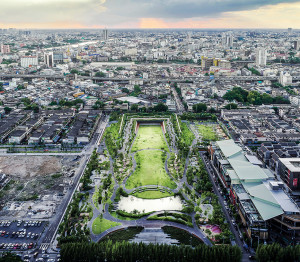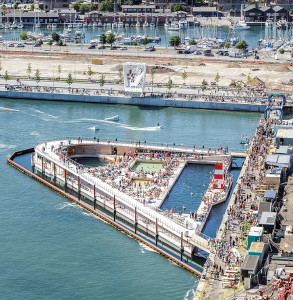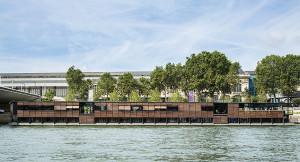LUG
AGO
2020
Water and architecture
Today, as in the past, water constitutes a precious natural resource. Other than vital to the survival of the human race, it is also an integral part of the inhabited environment, the city, the landscape and thus architecture. One of the first to observe this was Marcus Vitruvius Pollio in Book VIII of his De Architectura. Libri X. Vitruvius highlights water’s twofold value as a symbolic and functional element in the construction of the manmade environment. With water, on the water, in the water, in front of the water, for water, are just some of the definitions of the diverse relations that develop between architecture and water and that, in our contemporary era, constitute precious occasions for architecture. Relations can be established between architecture and water with a twofold value that is both functional and poetic: a figurative component evocative of intimate relations between artifice and nature, water becomes an element of composition that influences the language of the final result. Water as a symbolic factor, an integral part of architectural composition; water as infrastructure innervating the city and territory with which it establishes relations of reciprocal interaction; water as a resource for re-establishing environmental equilibriums in anthropic territories: these are just some of the principal themes explored in the selection of projects presented in this issue. Water as a resource capable of conditioning and giving form to human settlements. Water as a constituent element of geography and fundamental component of the built environment. Water not only as a source of wellbeing but also as an element against which we must protect ourselves. This latter is a phenomenon that now is compromising the equilibriums between human activities and the ecosystem. Among the causes of these imbalances are excessive urbanisation and climate change in progress that have heightened the vulnerability of territories and exposed urban settlements to risk of frequent and sudden flooding and the resulting hydrogeological instability. These phenomena are transforming water from a vital element into a threat for human life, imposing a change in direction in the planning and design of the city. There are two other aspects that make water a leading actor in urban design: the inclusion within urban mobility networks of watercourses and the redevelopment of waterfronts to create attractive public spaces, used as a driving force for urban planning policies oriented more toward the regeneration than the expansion of the city. The proximity of urban centres to the water is synonymous with wellbeing, with the possibility for movement, trade and tourism; today, coastal metropolises are the propulsors of a global economy, a symbol of economic power, growth and object of endless competition. United with functional questions and necessities linked with aesthetic suggestions bound to water, these aspects are offering important occasions for experiments, prefiguring new and more sustainable urban scenarios. A new challenge is thus on the horizon for the future of the city. Therefore, it is up to architects and planners to seize these multiple opportunities to create expressive designs and ensure the comfort and safety of our habitats.










